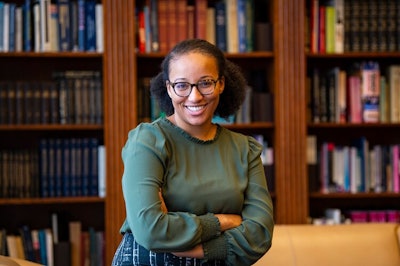In as little as two days, the U.S. Supreme Court is expected to deliver a devastating verdict to advocates of affirmative action. Although the exact scope of the decision can’t be known, it seems clear that the court’s conservative majority will strike down the consideration of race in admissions. Now, Georgetown University’s Center on Education and the Workforce has released a report on the potential impacts of the decision and how higher ed and governments can react.
Although race-conscious admissions policies have been under assault in recent years, the report traces their decline back to a 1978 Supreme Court case, Regents of the University of California v. Bakke. Although the court’s ruling upheld affirmative action, it changed its permissible motivation: no longer could schools consider race to achieve social justice purposes. Race-conscious admissions were now only allowed for the achievement of the educational benefits of diversity.
 Dr. Anthony Carnevale, director of the CEW
Dr. Anthony Carnevale, director of the CEW
This rationale, argues Carnevale in the report, is less politically appealing and morally compelling.
The report also makes clear that banning race-conscious admissions will make it nearly impossible for colleges to match their current levels of diversity, let alone the diversity of graduating high school classes. It recaps previous CEW research involving simulated admissions that showed that the proportions of all under-represented groups only increased in the highly unrealistic scenario of colleges directly admitting students from the entire high school graduating class, rather than only from those who applied to them. Models that incorporated students’ socioeconomic status were shown to potentially help claw back some level of diversity but were limited.
“We tried to make class do the job; it just doesn’t,” said Carnevale. “It’s simply not powerful enough.”
In order to compensate for an adverse ruling, colleges will need to make drastic reforms of admissions policies, the report notes. This includes de-emphasizing application factors that favor the wealthier, such as standardized tests, AP and IB classes, extra-curricular activities, and counselors’ recommendations.
The report noted that colleges also need to do a better job of considering the environments that applicants come from and the obstacles that they have overcome. The CEW recommends the Landscape tool offered by the College Board, which includes information on an applicant’s neighborhood and high school as well as how his or her test scores compare to those of classmates. Landscape doesn’t include race or ethnicity, making it likely to be a safe choice after any Supreme Court ruling. The report also suggests that colleges need to improve recruitment and outreach to disadvantaged students, which can include steps as simple as sending a letter letting them know that they won’t need to pay the full price listed for tuition and fees.
Carnevale is not sure whether schools will take these steps, adding that such a move could damage institutional prestige and would certainly be costly. Large endowments are a part of colleges’ identities, and they are loath to spend them. Any elite college president who presided over a declining endowment would likely be fired, said Carnevale.
However, the report argues that these sorts of reforms are likely to enjoy more political support than race-conscious admissions did, particularly if they are promoted in terms of improving fairness, affordability, and social mobility. Ultimately, the report says, such policies could help improve public support for colleges and universities.
The CEW also proposes a bold admissions reform that the governments could make: requiring that every college enroll at least 20% Pell grant recipients. Dr. Dominique Baker, an associate professor of education policy at Southern Methodist University, thought that such a plan might run into trouble.
 Dr. Dominique Baker, an associate professor of education policy at Southern Methodist University
Dr. Dominique Baker, an associate professor of education policy at Southern Methodist University
Money, again, is a problem.
“You would need very robust financial aid,” said Baker.
The report also suggests a big shift for state governments—that all their financial aid should be need-based. Baker thought that this idea had potential, especially because her research has shown that an increasing percentage of state aid is being awarded based on “merit.” Adjustments would need to be made, however, to allow for a larger portion of state aid to be used at private institutions.
A ban on race-conscious admissions will also necessitate a focus on the K-12 level, where the inequity begins, says the CEW. American K-12 schools are segregated economically and by race and are funded unfairly: districts with the most minoritized students receive 16% less funding than those with the fewest. Although attacking educational disparities could involve a Supreme Court case to establish a federal right to an education, a much more likely forum, says the report, is state courts. Carnevale believes that a shift in attention towards this area is already occurring. An agenda focused on equality of education could appeal to both conservatives who believe in a free market for talent and the need for strong growth, as well as liberals who want to fight discrimination and help the poor, according to the report.
Although the CEW’s recommendations would surely help restore some of the diversity that would be lost after the expected Supreme Court ruling, it remains unclear whether that ruling will spark a push towards those reforms, whether they’re by schools or by governments. As soon as this week, America may begin to find out.
Jon Edelman can be reached at [email protected]





















